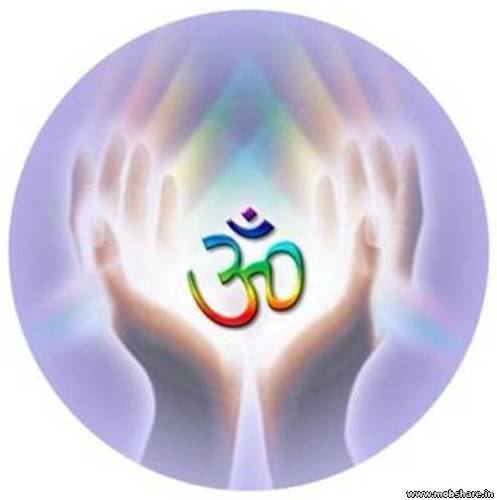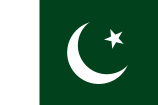Tuesday, August 31, 2010
VIEW: Institutional radicalisation of public schools —Ali K Chishti
By Editorial Staff
Tuesday, Augest 31,2010
Pakistan : There are millions of ‘non-state actors’ whose handlers could prod them into doing anything by evoking emotions through misquoting Quranic verses
“Hindu pundits were jealous of Al-Beruni” (Social Studies, Class VIII, Punjab Textbook Board, page 82). Another textbook reads, “The Hindus who had always been opportunists” (Social Studies, Class VI, Punjab Textbook Board, page 141). Still another reads, “The Hindus had always been an enemy of Islam.” (Urdu, Class V, Punjab Textbook Board, page 108). An e-mail I got from a Pakistani Hindu friend asked me what did they do to deserve this treatment. I had no answers. It is probably a classical example of our state’s deterioration because of its relentless pursuit of a destructive foreign policy agenda, and also abdicating its role in education to the jihadi organisations. Worse, whatever little education the state provides is not much better than what is being provided by the madrassas or by a school system like Al-Dawa (run by Lashkar-e-Tayyaba (LeT)) in terms of producing enlightened citizens. One, therefore, does not need a very active imagination to figure out the direction in which the country is headed. In fact, schools like those run by Jamaat-ud-Dawa (a new name for LeT), which received Punjab government’s funding of Rs 30million, systematically replaced the mainstream curriculum. Now Allah instead of anar (pomegranate) is used to teach the sound of the Urdu alphabet letter alif; bandooq (gun) instead of bakri (goat) for bey and jihad instead of jahaz (ship) for jeem. These jehadi public schools manufacturing Kasabs and Shezad Tanvirs who, when asked about their identity, class themselves as Muslims first and Pakistani afterwards. There are millions of ‘non-state actors’ whose handlers could prod them into doing anything by evoking emotions through misquoting Quranic verses.
I was on a television programme discussing radicalisation when one of the panellists boasted how one mard-e-mujahid is equal to 10 infidels. This compelled me to ponder how and when did the radicalisation of Pakistanis really start. The popular myth is that Ziaul Haq sowed the seeds of radicalisation but, in reality, institutionalised radicalisation of Pakistanis started in the late 1950s when the Iqbalian concepts of mard-e-momin and shaheen were promoted, much like the Nazis originally promoted the concept of the superman of Nietzsche. Interestingly, the security establishment promoted Iqbal’s idea post the 1958 coup to undermine civilian rule and tried to revise the status of Allama Iqbal as one of the original founders (note that Iqbal was not the national poet until 1958) because the army had traditionally been uneasy with Muhammad Ali Jinnah, a staunch secularist, as head of the state. Ayub obviously had a bone or two to pick with Jinnah due to Jinnah’s tough stance on the role of the armed forces.
And we transformed ourselves to Nietzsche’s idea when Pakistan, a newly born ill-equipped nation 1/5th the size of India, confidently initiated Operation Gibraltar and later Kargil, intoxicated by the one Muslim equals 10 Hindus syndrome. We all know what happened next. The expulsion of the USSR from Afghanistan and the failure to produce adequate secessionists in our immediate neighbouring countries to further our lofty and godly foreign policy designs led to a total breakdown of the strategy of using non-state actors as instruments of foreign policy execution, but we never learnt lessons from history. In fact, the ideology of religious radicalism mixed with political secessionism which we used to promote ‘strategic depth’ and manufacture the Frankenstein’s monster of the Taliban post-9/11 came back to haunt our country. Today, only because of this radicalisation of over half a century, Pakistan is forced to use its armed forces and wage a war on its own population in order to reintegrate them into the mainstream. The situation now is such that the ideological spillover of fundamentalism has led to a radicalisation of the polity within Pakistan. The earlier political phenomenon of having opposition parties supporting fundamentalism now has an armed dimension too, making things even more dangerous.
If this institutionalised radicalisation was not enough, Zaid Hamid, our very own Bill O’Reilly, was unleashed upon us as a propaganda-machine, who just would not stop talking until he waves a sabz hilali (a green flag with a crescent) on the Red Fort. This wannabe messiah, who is absolutely immune to logic, would give out sermons at universities and on television promoting a revived caliphate, pan-Islamism and inciting hatred against minorities. Anyone who monitors him closely would know that he has got a nuisance value and quite a bit of fans. He has transformed himself as the new messiah of generation-X with a good 40,000 fans on his Facebook page.
Institutionalised radicalisation is haunting us now. It is an open question how much further would we go down this path. And for how long. As Pervez Hoodbhoy once wrote, “It is also virtually certain that the social forces set into motion over the years through the education system will make most of Pakistani society — barring pockets of liberalism in the upper crust of society — more conservative and orthodox relative to the previous generation.” Sad, but something we are witnessing in the Pakistan of today. A de-radicalisation programme for Pakistan is the need of the hour.
The writer is a political analyst and can be reached at akchishti@hotmail.comm
Tuesday, Augest 31,2010
Pakistan : There are millions of ‘non-state actors’ whose handlers could prod them into doing anything by evoking emotions through misquoting Quranic verses
“Hindu pundits were jealous of Al-Beruni” (Social Studies, Class VIII, Punjab Textbook Board, page 82). Another textbook reads, “The Hindus who had always been opportunists” (Social Studies, Class VI, Punjab Textbook Board, page 141). Still another reads, “The Hindus had always been an enemy of Islam.” (Urdu, Class V, Punjab Textbook Board, page 108). An e-mail I got from a Pakistani Hindu friend asked me what did they do to deserve this treatment. I had no answers. It is probably a classical example of our state’s deterioration because of its relentless pursuit of a destructive foreign policy agenda, and also abdicating its role in education to the jihadi organisations. Worse, whatever little education the state provides is not much better than what is being provided by the madrassas or by a school system like Al-Dawa (run by Lashkar-e-Tayyaba (LeT)) in terms of producing enlightened citizens. One, therefore, does not need a very active imagination to figure out the direction in which the country is headed. In fact, schools like those run by Jamaat-ud-Dawa (a new name for LeT), which received Punjab government’s funding of Rs 30million, systematically replaced the mainstream curriculum. Now Allah instead of anar (pomegranate) is used to teach the sound of the Urdu alphabet letter alif; bandooq (gun) instead of bakri (goat) for bey and jihad instead of jahaz (ship) for jeem. These jehadi public schools manufacturing Kasabs and Shezad Tanvirs who, when asked about their identity, class themselves as Muslims first and Pakistani afterwards. There are millions of ‘non-state actors’ whose handlers could prod them into doing anything by evoking emotions through misquoting Quranic verses.
I was on a television programme discussing radicalisation when one of the panellists boasted how one mard-e-mujahid is equal to 10 infidels. This compelled me to ponder how and when did the radicalisation of Pakistanis really start. The popular myth is that Ziaul Haq sowed the seeds of radicalisation but, in reality, institutionalised radicalisation of Pakistanis started in the late 1950s when the Iqbalian concepts of mard-e-momin and shaheen were promoted, much like the Nazis originally promoted the concept of the superman of Nietzsche. Interestingly, the security establishment promoted Iqbal’s idea post the 1958 coup to undermine civilian rule and tried to revise the status of Allama Iqbal as one of the original founders (note that Iqbal was not the national poet until 1958) because the army had traditionally been uneasy with Muhammad Ali Jinnah, a staunch secularist, as head of the state. Ayub obviously had a bone or two to pick with Jinnah due to Jinnah’s tough stance on the role of the armed forces.
And we transformed ourselves to Nietzsche’s idea when Pakistan, a newly born ill-equipped nation 1/5th the size of India, confidently initiated Operation Gibraltar and later Kargil, intoxicated by the one Muslim equals 10 Hindus syndrome. We all know what happened next. The expulsion of the USSR from Afghanistan and the failure to produce adequate secessionists in our immediate neighbouring countries to further our lofty and godly foreign policy designs led to a total breakdown of the strategy of using non-state actors as instruments of foreign policy execution, but we never learnt lessons from history. In fact, the ideology of religious radicalism mixed with political secessionism which we used to promote ‘strategic depth’ and manufacture the Frankenstein’s monster of the Taliban post-9/11 came back to haunt our country. Today, only because of this radicalisation of over half a century, Pakistan is forced to use its armed forces and wage a war on its own population in order to reintegrate them into the mainstream. The situation now is such that the ideological spillover of fundamentalism has led to a radicalisation of the polity within Pakistan. The earlier political phenomenon of having opposition parties supporting fundamentalism now has an armed dimension too, making things even more dangerous.
If this institutionalised radicalisation was not enough, Zaid Hamid, our very own Bill O’Reilly, was unleashed upon us as a propaganda-machine, who just would not stop talking until he waves a sabz hilali (a green flag with a crescent) on the Red Fort. This wannabe messiah, who is absolutely immune to logic, would give out sermons at universities and on television promoting a revived caliphate, pan-Islamism and inciting hatred against minorities. Anyone who monitors him closely would know that he has got a nuisance value and quite a bit of fans. He has transformed himself as the new messiah of generation-X with a good 40,000 fans on his Facebook page.
Institutionalised radicalisation is haunting us now. It is an open question how much further would we go down this path. And for how long. As Pervez Hoodbhoy once wrote, “It is also virtually certain that the social forces set into motion over the years through the education system will make most of Pakistani society — barring pockets of liberalism in the upper crust of society — more conservative and orthodox relative to the previous generation.” Sad, but something we are witnessing in the Pakistan of today. A de-radicalisation programme for Pakistan is the need of the hour.
The writer is a political analyst and can be reached at akchishti@hotmail.comm
Subscribe to:
Post Comments (Atom)













No comments:
Post a Comment